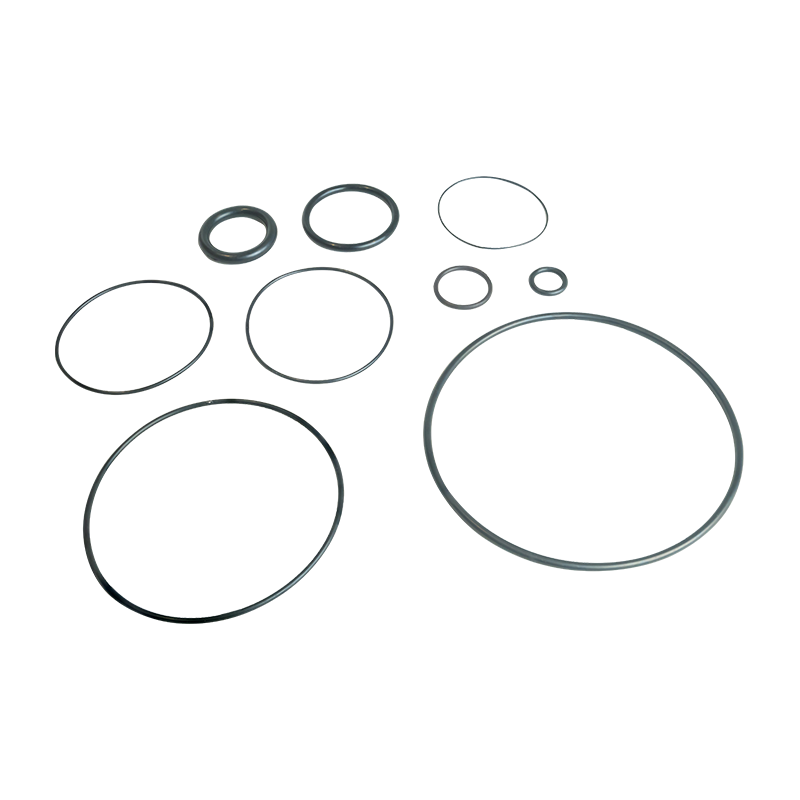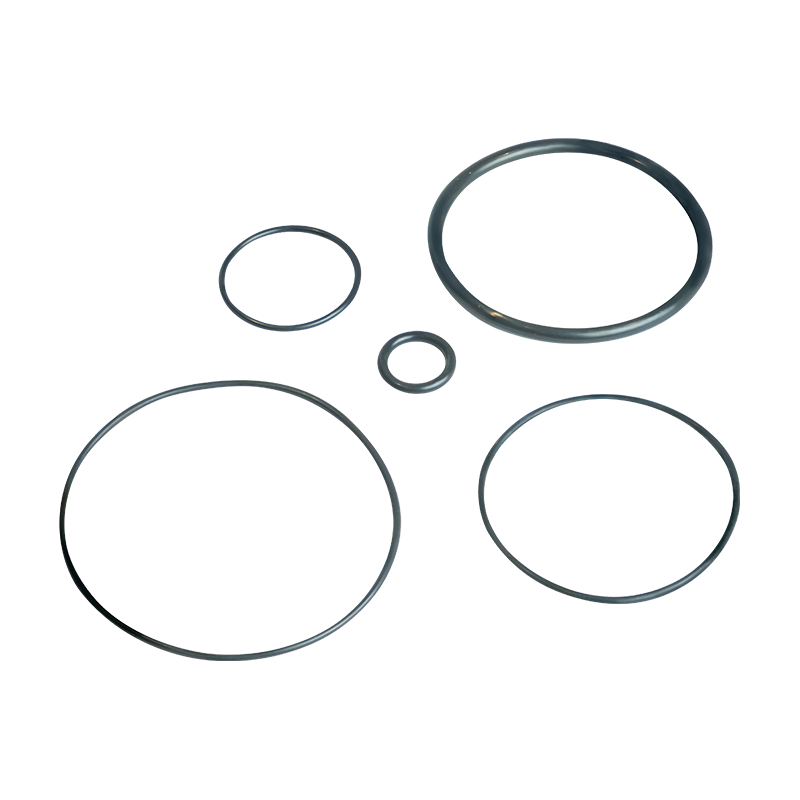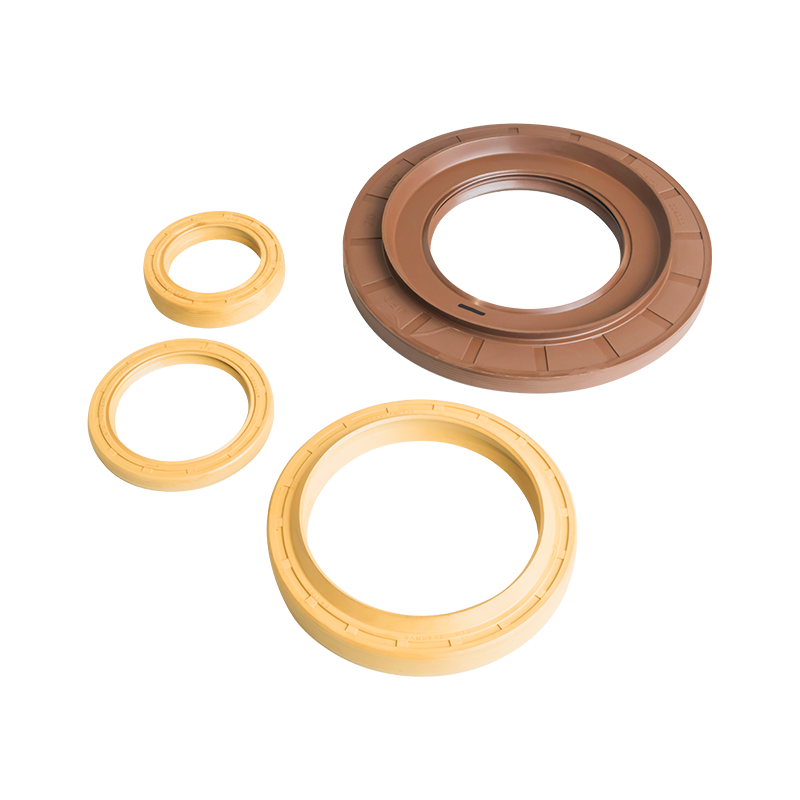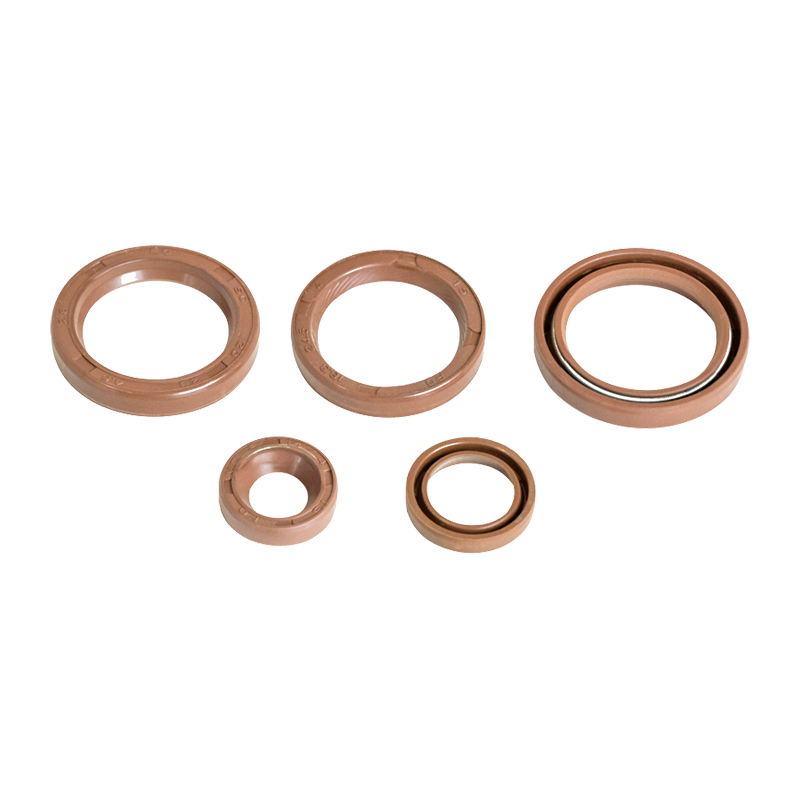Chemical Compatibility of Fluororubber (FKM) O-Rings Compared to Other Elastomeric Seals
Introduction
Elastomeric seals are critical components in industrial applications, ensuring leak-proof performance in harsh environments. Among various elastomers, fluororubber (FKM) O-rings stand out due to their exceptional chemical resistance, thermal stability, and mechanical properties. Understanding the differences in chemical compatibility between FKM and other elastomeric seals is essential for selecting the right material for specific applications. This article explores the chemical resistance of FKM O-rings in comparison to common elastomers such as Nitrile Rubber (NBR), Ethylene Propylene Diene Monomer (EPDM), Silicone (VMQ), and Perfluoroelastomers (FFKM).
1. Overview of Fluororubber (FKM) O-Rings
FKM is a synthetic fluoropolymer elastomer known for its outstanding resistance to high temperatures, oils, fuels, and aggressive chemicals. The presence of fluorine-carbon bonds in its molecular structure provides superior stability against degradation, making FKM a preferred choice for demanding sealing applications in aerospace, automotive, oil and gas, and chemical processing industries.
Key Properties of FKM:
- Temperature Resistance: -20°C to +200°C (short-term up to 250°C)
- Excellent resistance to oils, fuels, acids, and solvents
- Low gas permeability
- Good mechanical strength and compression set resistance
2. Chemical Compatibility Comparison with Other Elastomers
Different elastomers exhibit varying degrees of resistance to chemicals, depending on their molecular structure. Below is a detailed comparison of FKM with other commonly used sealing materials.
2.1 FKM vs. Nitrile Rubber (NBR)
NBR is widely used for its cost-effectiveness and good resistance to oils and fuels. However, its chemical compatibility is limited compared to FKM.
Chemical Resistance Differences:
-
Hydrocarbons & Oils:
- FKM: Excellent resistance to a broad range of hydrocarbons, including aromatic and chlorinated solvents.
- NBR: Resistant to mineral oils and fuels but degrades in aromatic and chlorinated hydrocarbons.
-
Acids & Bases:
- FKM: Performs well against many acids (e.g., sulfuric, nitric) and weak bases but may degrade in strong alkalis like concentrated sodium hydroxide.
- NBR: Poor resistance to strong acids and oxidizing agents.
-
Temperature Stability:
- FKM: Maintains integrity at high temperatures (up to 200°C).
- NBR: Limited to ~100°C, making it unsuitable for high-heat applications.
2.2 FKM vs. Ethylene Propylene Diene Monomer (EPDM)
EPDM is known for its excellent resistance to water, steam, and polar solvents but performs poorly in hydrocarbon environments.
Chemical Resistance Differences:
-
Polar Solvents (Alcohols, Ketones, Water):
- EPDM: Highly resistant to water, glycols, and alcohols.
- FKM: Good resistance but may swell in some polar solvents.
-
Hydrocarbons & Oils:
- FKM: Superior resistance to oils and fuels.
- EPDM: Swells and degrades rapidly in hydrocarbon-based fluids.
-
Oxidizing Agents:
- FKM: Better resistance to oxidizing chemicals like hydrogen peroxide.
- EPDM: Vulnerable to degradation under prolonged exposure.
2.3 FKM vs. Silicone (VMQ)
Silicone rubber offers excellent flexibility and high-temperature resistance but lacks the chemical robustness of FKM.
Chemical Resistance Differences:
-
High-Temperature Stability:
- VMQ: Can withstand temperatures up to 230°C but has poor mechanical strength.
- FKM: Better mechanical properties at high temperatures.
-
Fuel & Oil Resistance:
- FKM: Excellent resistance to fuels and lubricants.
- VMQ: Swells significantly in hydrocarbon-based fluids.
-
Acids & Bases:
- FKM: More resistant to aggressive acids.
- VMQ: Degrades in strong acids and alkalis.
2.4 FKM vs. Perfluoroelastomer (FFKM)
FFKM is the highest-performing elastomer, offering near-universal chemical resistance but at a significantly higher cost.
Chemical Resistance Differences:
-
Aggressive Chemicals (Strong Acids, Bases, Solvents):
- FFKM: Resistant to almost all chemicals, including concentrated acids and ketones.
- FKM: Excellent resistance but may fail in extremely aggressive media.
-
Cost & Application Suitability:
- FFKM: Used only in extreme chemical environments (e.g., semiconductor, pharmaceutical).
- FKM: More cost-effective for most industrial applications.
3. Key Factors Influencing Chemical Compatibility
Several factors determine how well an elastomer resists chemical attack:
3.1 Polymer Structure
- FKM: Fluorine content enhances resistance to hydrocarbons and oxidation.
- NBR/EPDM: Lack of fluorine makes them susceptible to certain chemicals.
3.2 Temperature Effects
- Elevated temperatures accelerate chemical degradation. FKM maintains stability better than most elastomers.
3.3 Swelling & Permeation
- FKM exhibits low swelling in oils and fuels, whereas NBR and EPDM may absorb fluids, leading to seal failure.
4. Applications Based on Chemical Compatibility
FKM O-Rings Preferred in:
- Automotive: Fuel systems, turbocharger seals.
- Aerospace: Hydraulic systems, jet fuel resistance.
- Oil & Gas: Downhole seals, chemical processing.
Alternative Elastomers in Less Demanding Environments:
- NBR: Hydraulic systems with minimal chemical exposure.
- EPDM: Water and steam applications.
- VMQ: Food-grade and high-temperature (non-oil) uses.
5. Conclusion
Fluororubber (FKM) O-rings outperform most conventional elastomers in chemical resistance, particularly in hydrocarbon-rich and high-temperature environments. While materials like NBR, EPDM, and silicone have their niche applications, FKM remains the optimal choice for aggressive chemical and thermal conditions. For the most extreme environments, FFKM may be necessary, but FKM provides an excellent balance of performance and cost-effectiveness for industrial sealing solutions.
Understanding these differences ensures the correct selection of O-ring materials, enhancing reliability and longevity in critical applications.
Sray up to date with allour recent products
- Address: No. 6 Yangsha Road, Chengbei Industrial Park, Huilong Town, Qidong City, Jiangsu Province China
- Phone: +86-13906283641+86-18934546679
- Fax: +86-0513-83698022
- Email: [email protected]




 English
English русский
русский 中文简体
中文简体







